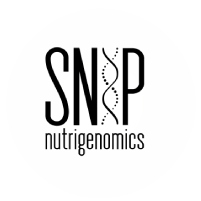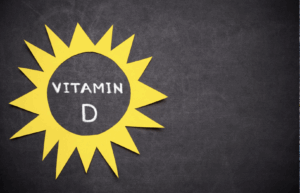Eating nutrient-dense foods is an important part of maintaining a healthy lifestyle.
But what are nutrient-dense foods, and why should we prioritize them?
This blog post will discuss the benefits of eating nutrient-dense foods, provide examples, and explain how to ensure you’re getting enough of these powerhouses in your diet.
We’ll also give you our top 10 favorite nutrient-dense foods list.
What are Nutrient-Dense Foods?
Nutrient-dense foods pack a punch when it comes to nutrition but are lighter on calories.
These powerhouse foods contain vitamins, minerals, complex carbohydrates, lean proteins, and healthy fats that help nourish our bodies and keep us feeling energized throughout the day.
Examples include fruits and vegetables, whole grains such as oats and quinoa, legumes like lentils and beans, nuts and seeds, fish and poultry.
Benefits of Eating Nutrient-Dense Foods
Nutrient-dense foods provide essential vitamins and minerals that help keep our bodies functioning optimally.
For example, they can help boost the immune system by providing important antioxidants or increase energy levels by supplying fiber for slow-burning energy.
Nutrient-dense foods may also reduce inflammation in the body, which has been shown to help prevent chronic diseases such as cancer or heart disease.
Additionally, many nutrient-dense foods contain healthy fats, which help us feel full for extended periods, thus aiding in weight loss or weight management efforts.
How to Make Sure You’re Eating Enough Nutrient-Dense Foods
One of the easiest ways to ensure you’re getting enough nutrient-dense foods is to choose them first when grocery shopping or meal planning.
This means choosing fresh produce before processed items such as chips or cookies. It also means selecting whole grain options over refined grain products whenever possible (ex: brown rice instead of white).
Additionally, adding more plant-based meals into your weekly routine will give you more opportunities to experience the health benefits associated with nutrient-dense food choices.
Ensure you’re drinking plenty of water throughout the day to stay hydrated – water is key for optimal digestion and absorption of nutrients from food.
Lastly, understanding your genetic blueprint can help you to make the most of nutrient foods. Continue below for some SNP-specific insights. (New to nutrigenomics? Test today and learn which foods can help optimize your genetics!)
Are There Any Dangers Associated With Eating Too Many Nutrient-Dense Foods?
While no known dangers are associated with eating too much nutrient-dense food, it is important to note that certain nutrients can be harmful if consumed in excess (vitamins A & E), so be mindful of portion sizes (moderation) when incorporating new items into your diet.
Incorporating more nutrient-dense foods into your diet is an effective way to improve overall health and well-being while still enjoying delicious meals. We hope this blog post has helped inform you on what constitutes a nutrient-dense food choice, as well as provided some tips on how you can make sure you’re getting enough each day. As always, listen to your body and consult a medical professional if necessary. Enjoy!
Top 10 Favorite Nutrient-Dense Foods
Salmon
Salmon and other fatty types of fish contain the most omega-3 fatty acids. Omega-3s are extremely important for optimal functioning of your body and are linked to improved well-being and a lower risk of many serious diseases. A 100-gram serving of wild salmon contains about 2.2 grams of omega-3s, along with lots of high-quality animal protein and ample vitamins and minerals, including large amounts of magnesium, potassium, selenium, and B vitamins. It’s a good idea to eat fatty fish at least once or twice a week to get all the omega-3s your body needs.
Some studies suggest that eating fatty fish regularly may help reduce the risk of heart disease, feeling low, and other health conditions. Studies suggest fatty acids support cognitive performance in middle-aged humans.
Salmon is a good option because it tastes good and is relatively easy to prepare. Plus, it contains nutrients that can help you feel full without consuming too many calories. Try to choose wild salmon over farmed salmon whenever possible since it tends to be more nutritious and less likely to contain contaminants.
Seaweed
The ocean contains a lot of plants, not just fish. There are thousands of plant species in the ocean, some of which are very nutritious. These plants are usually collectively referred to as seaweed. Seaweed is popular in dishes such as sushi. In many cases, seaweed is even more nutritious than land vegetables. It’s particularly high in minerals such as calcium, iron, magnesium, and manganese. It’s also loaded with various bioactive compounds, including phycocyanins and carotenoids. Some of these substances are antioxidants with powerful anti-inflammatory capacities (very important for those with IL-6, CPR, and TNF-a mutations. But seaweed is especially good for you because it contains iodine. Iodine is a mineral that your body needs to make thyroid hormones. If you eat just a little seaweed a few times each month, your body will get all the iodine it needs.
Kale
Kale is the undisputed leader of leafy greens: its dense nutrition profile, low-calorie count, and cancer-fighting compounds make it a powerhouse vegetable. Vitamin C, A & K1 abound in kale – with only 9 calories per cup! Packing more than just vitamins, minerals such as potassium and magnesium are present in kale too. Plus, kale contains bioactive molecules that show promise when tackling abnormal cellular growth.
With its low oxalate content, kale is an unbeatable superfood for biohackers! Not only does this leafy green contain essential nutrients like calcium, but it also has potent compounds that help fend off cancer. So fill your fork with kale to fuel up on some powerful, natural goodness.
Move over spinach – it’s time for tasty supercharged kale to take center stage!
Garlic
Garlic is more than a flavorful kitchen staple – it’s also an incredible source of nutrition and health benefits. Packed with vitamins C, B1 and B6 as well as calcium, potassium copper plus manganese and selenium – garlic boasts sulfur compounds such as allicin that may help lower blood pressure while simultaneously raising HDL cholesterol.
Plus research indicates exciting possibilities in its cancer-fighting properties.
Those with MTHFR or GSTP1 mutations can benefit from adding ample garlic to your diet. Learn more in your SNiP actionable methylation and detox DNA reports.
Shellfish
Unlock the nutrition potential of the sea! Shellfish, like clams and oysters, are powerful superfoods filled with vitamins B12 and C as well as minerals such as iron, selenium, and copper.
With a single serving providing 16 times or more than 600% RDI respectively – it’s no wonder these nutrient-dense delicacies have been celebrated by ancient cultures for centuries. Dive into biohacking your body today with shellfish!
Those of you with FTO, FUT2, or MTHFR variants may choose to look into this deeper. See your SNiP methylation, detox and gut/microbiome DNA reports for details.
Potatoes
Potatoes are an unbeatable combo of nutrients and satiety, packing a powerful punch that has been sustaining people for centuries. They’re even more valuable than we knew – cool them after cooking to form beneficial resistant starch! Potassium, magnesium, iron, copper & manganese come together with vitamin C and most B vitamins in this biohacker’s secret weapon against hunger cravings.
Very helpful for those with FUT2 variants. See your SNiP gut/microbiome DNA report for details.
Liver
Fuel your body with one of the most nutritionally rich organs on Earth – liver! Rich in vitamins and minerals such as Vitamin B12, B5, B6, niacin & folate, iron, phosphorus, zinc and selenium – a 3.5-ounce portion offers more than 700% of adequate daily intake for essential nutrients like vitamin A and copper.
Try making some delicious recipes that include this powerful organ meat to let it fuel you from the inside out.
Tip: Choose grass-fed over conventional beef sources. Grass-fed beef is lower in calories and fat while being more nutritious, including higher in omega-3 fatty acids.
Those of you with MTHFR variants may benefit from liver, especially.
Egg Yolks
Discredited for their cholesterol, egg yolks are one of nature’s most nutritious foods—a kind of natural multivitamin. Loaded with vitamins and minerals like choline, lutein and zeaxanthin, just to name a few – these powerful nutrients can protect your eyes by reducing the risk of eye diseases such as cataracts or macular degeneration. Packed with healthy fats and high-quality protein that is easy on the wallet – you don’t need to sacrifice nutrition when it comes to affordable health-hacking meals.
Blueberries
Though small, blueberries pack a punch when it comes to nutrition. Thanks to their antioxidant-rich content, consumption of these tiny fruits has been linked to significant benefits for brain health and weight management. In one study of older adults, regular consumption of the fruit improved memory function while another found that adding them to an existing diet helped lower blood pressure.
Those with SOD or PON1 variants can especially benefit from blueberries’ antioxidant support.
So why not make sure your daily routine includes this little berry powerhouse? It’s never too late (or too early) to start benefiting from blueberries’ nutritional superpowers.
Dark Chocolate (Cocoa)
For those looking to live healthier lives, dark chocolate, with its high cocoa content, is the ultimate superfood! Packed full of fiber, iron and other essential minerals like copper & magnesium – this delicious treat provide your body with an abundance of antioxidants. But that’s not all; multiple studies have shown chocolate can reduce blood pressure levels and bad cholesterol while improving circulation and brain function too!
So, jump-start your daily routine with a small square of dark chocolate, or consume 5 times per week for optimal heart health benefits – protecting you from cardiovascular disease by up to 57%. Not just any kind of cocoa will do – look for organic varieties that contain at least 70%, or even up to 85% cocoa content for maximum benefits.


